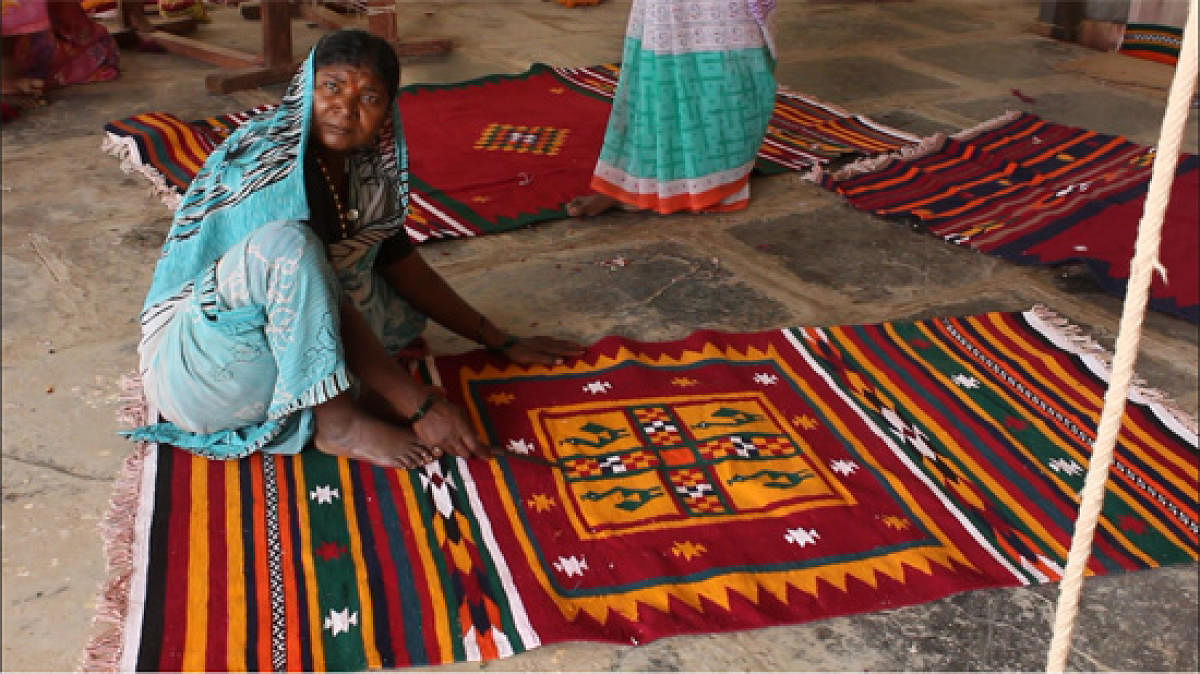Bright colours with intricate geometric and animal designs make the durries from Navalgund in Dharwad district stand out from the rest. The making of Navalgund durries is believed to have started during the 16th century when jamkhana weavers migrated from Vijayapura to Navalgund to continue their craft safely during a tussle for power between Deccan Sultanate and Vijayanagar Empire. Soon, they set up their looms and started weaving durries. This craft remains unique to this region even now.
There are three types of durries: Navalgund Jamkhana, Ja-Namaz and Guddar, with the last two woven on vertical looms by women of the Sheikh Sayeed community. While durries in different parts of India are woven on a horizontal ground loom, Navalgund durries are woven on an indigenous vertical loom. As a result, no two designs look the same.
The art of making durries is passed on from generation to generation. The weavers have preserved the motifs of woollen carpets and now those motifs are the lifeline of these durries. These are weaved on a vertical loom, which is locally known as khadav magga.
What is interesting to see is that the weavers don’t refer to any manuals to create the designs. Instead, they weave from experience and memory, giving each durrie a distinct touch. Colour-wise, red is dominantly used as the background in most durries with yellow used to set other colours within it. Green, black and white are used as accenting colours.
Each durrie is divided into three parts with centre and two ends, with the centre having geometric and simplified designs, and the ends woven in symmetrical designs. Some of the traditional names of the motifs used are based on geometrical shapes like Badi Ghari, a zigzag diamond shape with double edge, and Nanhi Ghari a zigzag diamond shape with single edge. As for animal and bird designs, peacocks prominently feature as they are found in abundance in this area.
With the legacy of making Navalgund durries being carried on by several generations, this GI-tagged durrie is not only seeing a revival of sorts but also a growing interest to preserve this unique art form.
